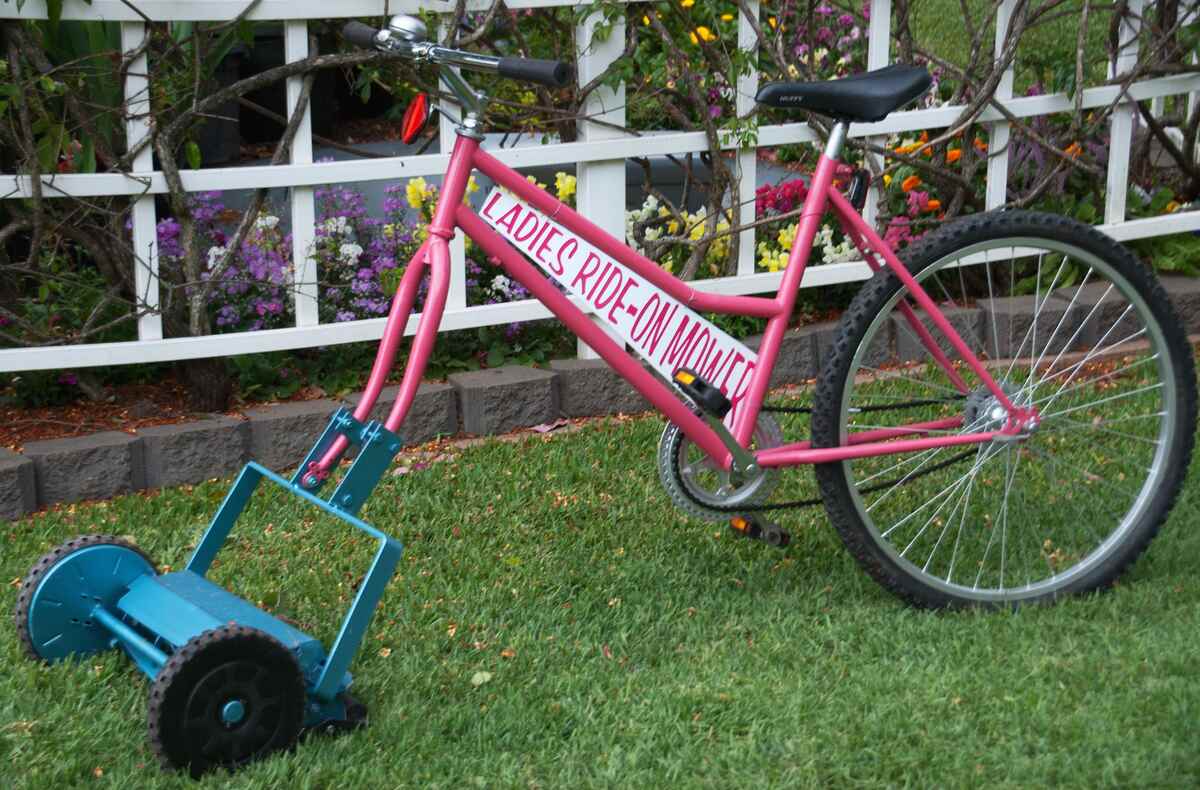
Dense, thick, organic-grown lawns store carbon, produce oxygen, capture and infiltrate stormwater, and are essential for a healthy neighborhood. They are also a joy to play in, safer for children, pets, colorful Atlanta butterflies, and hard-working bees. Making the switch to green lawn maintenance is easier than you think and so rewarding. We talk here about 13 simple eco-friendly lawn care tips for your Atlanta yard.
- 1. Test the Soil
- 2. Fertilize Only if You Need To
- 3. Feed the Soil to Feed the Grass
- 4. Pesticides Are Not the Only Way
- 5. Overseed for Weed Control
- 6. Keep the Grass Tall and the Blades Sharp
- 7. Water Less Often for Deep Roots
- 8. Stop Bagging Grass Clippings
- 9. Use Rain Barrels to Irrigate the Lawn
- 10. Replace Some Turf with Groundcovers Native to Atlanta
- 11. Increase Biodiversity with Habitat Gardens
- 12. Switch to Green Lawn Care Tools
- 13. Seek Out Organic Knowledge
1. Test the Soil
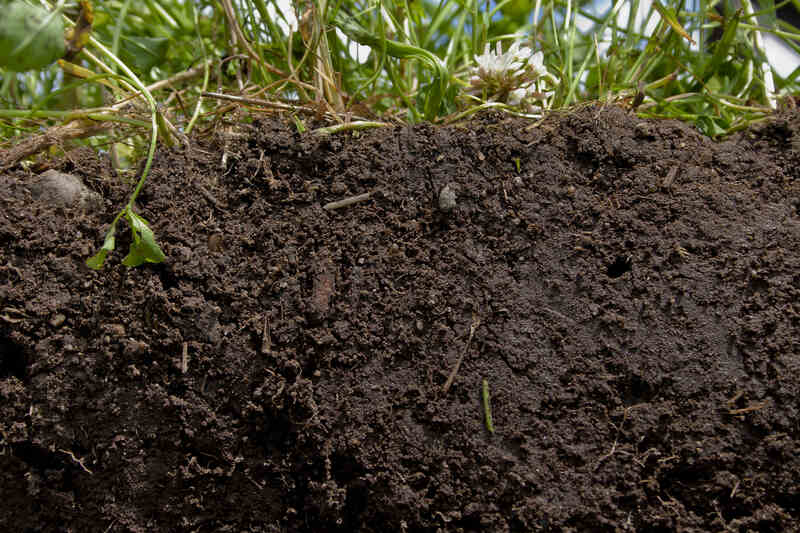
A soil test costs under $15. For this price, it tells you everything you need to know about the ground under your grass:
- Structure
- Composition
- Fertility
- pH
Left unchecked for a few years, the red clay soil of the Metro Atlanta area turns acidic, with pH dropping below 5.5. You don’t want that because low pH prevents nutrient absorption, leading to:
- Excessive fertilization
- Overwatering
- Weak plants that are more vulnerable to diseases and need more fungicides
That’s why the Center of Urban Agriculture at UGA advises lawn owners to test the soil every two or three years. Treated with lime, acidic soil balances its pH and is ready for efficient fertilization in about 6 months.
Without a soil test showing nutrient deficits, homeowners tend to over-fertilize. This leads to toxic runoff that gets into the local waters where it:
- Promotes algae bloom
- Kills aquatic organisms
- Pollutes drinking water
You can take a soil sample to the Fulton County Extension Office in person, or you can send it by mail. It takes up to two weeks to receive the results with advice on proper soil amendments.
2. Fertilize Only if You Need To
Excess fertilizers wash off your lawn in rainy spring and fall months, getting into storm drains. They enter our beautiful lakes and rivers, all the way to the ocean, contaminating the water.
All that nitrogen we add to make the grass greener leads to algae blooms that create dead zones, kill fish, and produce harmful toxins.
How to fertilize eco-friendly? It’s easy, but you have to make some changes and stick with them:
- Always fertilize during the growing season. This is when the grass is hungry and quickly absorbs nutrients, with less leaching. For warm-season grasses in Atlanta, this is during summer. If you have a tall fescue lawn, fertilize it during fall.
- Don’t fertilize on compacted soil. Aerate before you spread any fertilizer to ensure proper absorption and minimal runoff.
- Apply the right amount of fertilizer, considering soil test results and product instructions. More is not better.
- Use a side guard on your spreader to get all the fertilizer on the lawn and nothing on the walkways or other impervious surfaces.
- Switch to an organic formula from a trusted provider. You can buy it from the store or make some organic fertilizer at home.
3. Feed the Soil to Feed the Grass
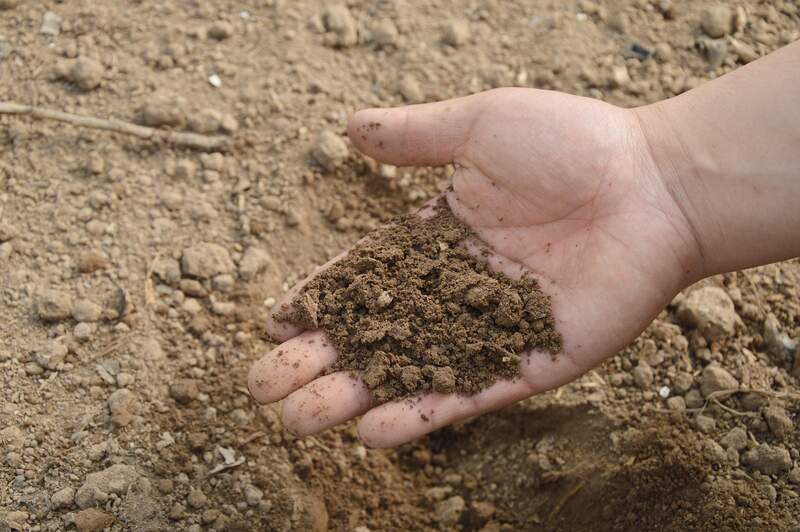
Switching from lab-made fertilizers to organic grass food is a big step in eco-friendly lawn care. It’s also one of the most efficient lawn care tips to take your yard to the next level of health and beauty.
Synthetic fertilizers are made to feed the grass directly and quickly. They have nitrogen, potassium, and phosphorus, essential for grass growth. With high concentration and fast release, this type of grass food leads to rapid growth at the expense of the root system. It can also build up in the soil, leading to leaching and runoff.
Organic fertilizers feed the entire ecosystem: soil, helpful microorganisms, and grass. They:
- Need soil microbes to break down the organic matter.
- Release nutrients slowly, at a pace more suitable for grass needs.
- Come with minimal risk of leaching and runoff.
- Are safer for plants, wildlife, and humans.
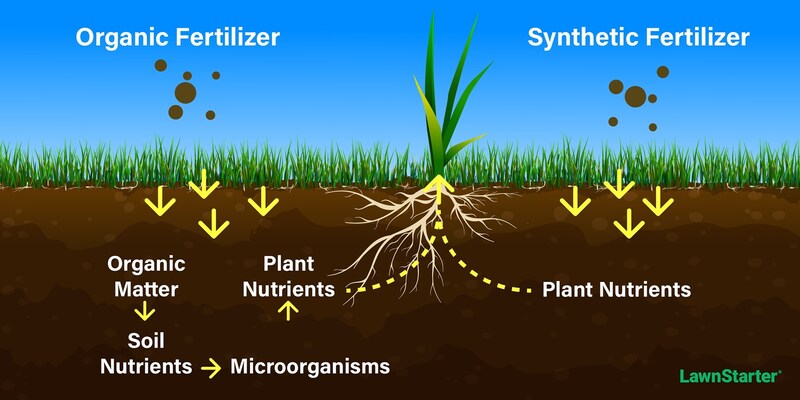
Among the most popular sources of natural fertilizers are manure, worm castings, fish meal, and compost. You can find detailed information about what nutrients and how much each type of organic fertilizer offers on the University of Georgia Extension Office website.
4. Pesticides Are Not the Only Way
There are other ways to remove pests from your lawn than using pesticides harmful to the environment. Integrated Pest Management (IPM) works with most of these strategies.
IPM is a pest control approach focused on making Atlanta lawns less alluring and accessible to pests. It actually includes some lawn care tasks you should already be doing, such as:
- Periodic aeration and removing the thatch layer to improve air circulation.
- Removing fallen branches and leaves (shelter options and food sources for pests).
- Mowing regularly.
- Watering less frequently to avoid moisture build-up.
- Trimming tree branches to allow more sunlight.
- Setting live traps for rodents.
- Installing fences.
These simple lawn maintenance measures can keep the popular Atlanta pests away at least partially and reduce the need to apply harmful pesticides.
5. Overseed for Weed Control
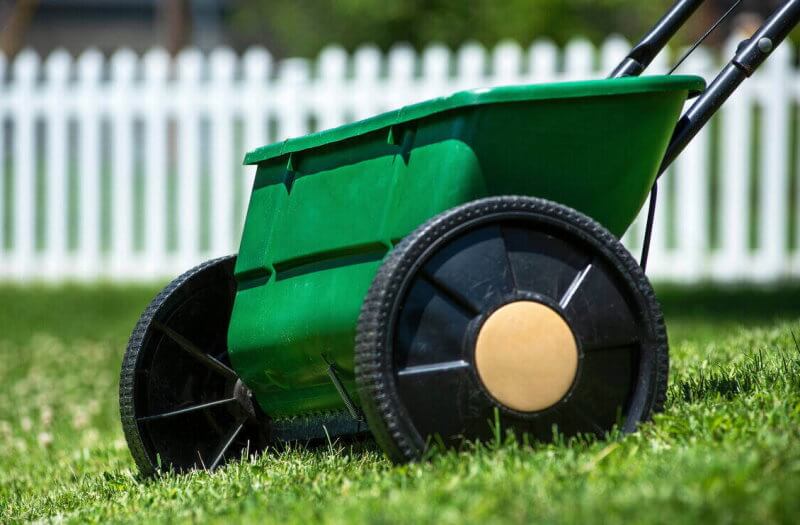
Turfgrass gets thinned in time, and grass plants live only up to seven years. Overseed annually to keep a tight lawn and cover all bare spots. It is one of the best ways to fight weeds without herbicides.
A dense, thick Atlanta lawn leaves less space, sunlight, and nutrients for weeds. The best times to overseed in the Big A climate are:
- Early to mid-fall for tall fescue and other cold-season grasses
- During the winter season (“dormant-seeding”)
- Late spring to early summer for warm-season Atlanta grasses such as Bermuda and Zoysia
As a bonus, dense lawns also keep the moisture better in the soil, reducing water usage all year round.
6. Keep the Grass Tall and the Blades Sharp
When you cut the grass taller, you protect its stems from heat (or cold), keeping it healthier and less vulnerable to diseases.
Taller turfgrass gives the soil more shade, reducing water evaporation and limiting weeds’ access to sunlight. So, just from mowing the grass a little taller, you’ll need:
- Less fertilizer
- Less watering
- Fewer pesticides
How tall should you mow? It depends on the type of grass on your lawn. Here are the recommended heights for the most popular Atlanta grasses:
| Turfgrass type | Mowing height |
| Hybrid Bermuda | 1 – 2 ½ inches |
| St. Augustinegrass | 3 ½ – 4 inches |
| Tall fescue | 2 – 3 ½ inches |
| Zoysiagrass | 1 – 2 inches |
| Centipedegrass | 1 – 2 inches |
Always keep your mower blades sharp. The grass recovers faster and is less prone to lawn diseases with a clean cut.
7. Water Less Often for Deep Roots
The best way to have a beautiful, lush lawn in the Peach State while protecting the environment is to focus on a healthy lawn with deep roots.
Plants with a deeper root system have access to more hidden moisture and need less watering. They also deal better with hot summer days and periods of drought.
How to stimulate turfgrass root growth? It’s all in your watering technique:
- Deep watering allows the moisture to go 2 to 4 inches into the soil.
- Less frequent irrigation encourages roots to follow it deep into the ground.
To use this nifty trick, follow two simple watering techniques:
- Water once a week. Atlanta lawns need 1 inch of water weekly if it doesn’t rain.
- Irrigate early in the morning. Typically before 10:00 a.m. is a good time. On hot summer days, the golden interval is 3:00 a.m. to 7:00 a.m.
Avoid watering in the evening. Any moisture remaining on the grass blades overnight exposes the lawn to mold.
8. Stop Bagging Grass Clippings
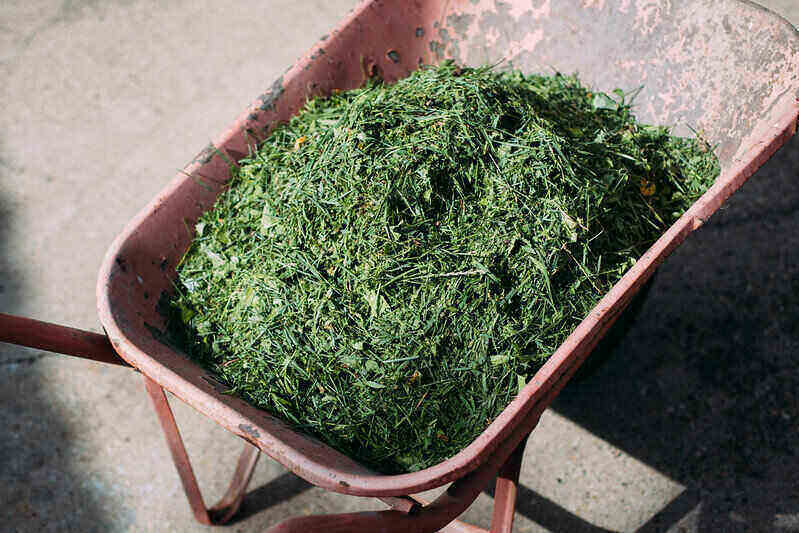
Bag after bag and mow after mow, yard trimmings make up 15% of the waste entering landfills in the United States every year. They become garbage you pay to get off your lawn and a source of pollution, when they’re actually a precious eco-friendly, free source of nutrients to regenerate Atlanta’s soils:
- Grass clippings return 50% to 100% of the nitrogen your lawn needs. They also give back about 1.8 pounds of phosphorus per 1,000 square feet within one year of regular mowing.
- Dead leaves are rich in carbon, which feeds the valuable microorganisms in your yard. They also add nitrogen, potassium, phosphorus, calcium, magnesium, and sulfur.
If you mulch your grass clippings as part of your seasonal lawn care schedule, you won’t need other fertilizers to feed your lawn.
How to use yard trimmings to feed your Atlanta lawn? Just do this:
- Instead of raking or blowing dead leaves, use a mower to cut them at dime-size and leave them on the lawn. This way, you ensure they decompose fast and don’t add to the thatch layer.
- Always leave grass clippings behind when mowing. You can use a mulching mower to make sure they are finely cut.
If there are too many yard trimmings on your lawn, collect grass clippings and fallen leaves and cut them thin. You can use them as mulch on flower beds and in the garden or add them to a good compost bin.
9. Use Rain Barrels to Irrigate the Lawn
With a few rain barrels receiving rainfall from your gutter downspouts, you can save more water than you think. For every inch of rain pouring on a one-square-foot area of your roof, rain barrels collect 0.6 gallons of rainwater. It’s just there for the taking:
- Free of charge
- Ready to use
- Healthier for your lawn than tap water
Why save lawn water? About one-third of the United States’ residential water use goes into landscape irrigation. Tap water consumes energy for processing and delivery to your home, sprinklers, and hoses. When using less tap water to irrigate the lawn, you save that energy and the fuel used to create it.
Learn more about rainwater harvesting in Georgia in our state-by-state guide.
10. Replace Some Turf with Groundcovers Native to Atlanta
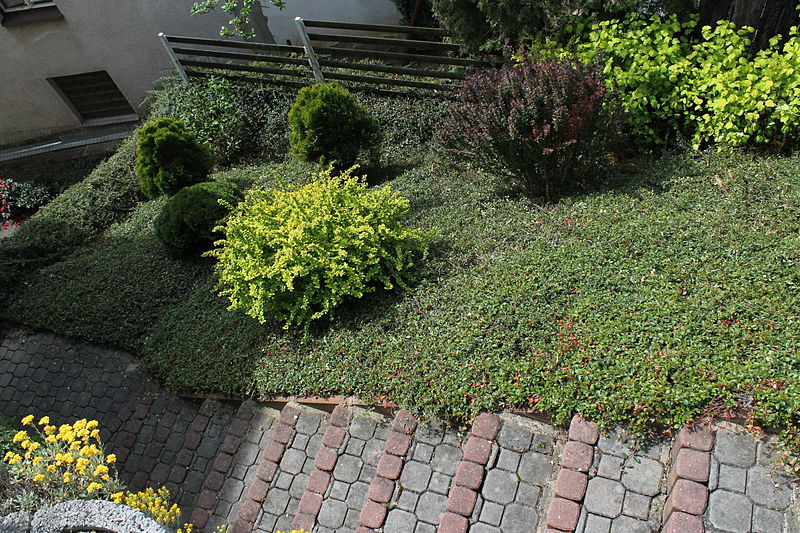
Groundcovers are low-growing plants. They spread near the soil level in a fresh, rich green blanket and rarely need mowing. Native species are also adapted to Atlanta’s local climate. This means they require low to no watering or fertilization. Among the most common groundcovers native to the Peach State are:
- Spotflower
- Carolina anemone
- Straggler daisy
- Lobed tickseed
- Dutchman’s breeches
- Coastal indigo
11. Increase Biodiversity with Habitat Gardens
So much uniformity in your lawn grass means fewer opportunities for biodiversity. Add native plants that produce nuts, fruit, seeds, or nectar, which wildlife uses as a food source. The most popular types of habitat gardens are:
- Butterfly gardens, rich in beautiful wildflowers that attract Atlanta’s colorful butterflies (Tiger Swallowtail, Sleepy Orange, Black Swallowtail, Cloudless Sulphur, Cabbage White).
- Water gardens, offering a clear water source to birds and insects.
- Pollinator gardens built to attract hummingbirds, bees, butterflies, beetles, and other cheerful and useful insects and birds.
- Rock gardens – combining rocks with native shrubs, succulents, and wildflowers, a rock garden inserted in your yard makes it more interesting and lowers water consumption.
12. Switch to Green Lawn Care Tools

According to the U.S. Environmental Protection Agency (EPA), a new gas-powered lawn mower emits as much air pollutants in one hour as 11 new cars driving around for one hour.
You can do your part in cleaning the Atlanta air by switching to an electric mower and other green lawn care tools. Electric-powered alternatives have become more accessible and are powerful enough to deal with the average Atlanta lawn. Go for a corded model if the lawn is small and close to an outdoor outlet, or choose a battery-powered option for larger areas.
13. Seek Out Organic Knowledge
Organic lawn care has amazing benefits for your family’s health and the environment you live in. But it requires a little more hands-on knowledge and experience than just spreading a synthetic fertilizer.
To avoid more work than necessary, reach out and look for a lawn care professional in the Metro Atlanta area that can help you with all the useful details. Search thoroughly, and don’t stop at the first landscaping contractor that can give you some information you already found online. You need someone with real experience in organic lawn maintenance who understands how such an ecosystem works.
FAQ About Eco-Friendly Lawn Care
Making your Atlanta lawn more eco-friendly is not hard. Start by testing the soil and switching to organic fertilizers. Continue by using grass clippings and dead leaves to feed the grass, mowing tall, and overseeding to keep the weeds under control with few to no pesticides.
The most eco-friendly way to mow a lawn is at the proper height for the type of grass you grow and leaving the clippings on the lawn to feed the soil. Bonus points if you use an electric mower.
Yes. Coffee grounds are rich in nitrogen and trace minerals and can stimulate your grass to grow greener and healthier – and they’re all-natural.
Enjoy a Green, Safe, Eco-Friendly Lawn in Atlanta Today!
If you’re still on the classic lawn care track, you’re spending lots of money on pesticides, herbicides, and synthetic fertilizers that can harm your lawn and the useful microorganisms in the soil. Give the organic approach a try instead. It uses grass clippings and dead leaves for nutrients, a taller lawn to smother weeds, and prevention measures to keep the pests away. Organic lawn care is also safer for your family and an easy way to keep the neighborhood clean and healthy. Contact an environment-oriented lawn care company in Atlanta and enjoy a green, eco-friendly lawn today!
Main Image Credit: Leonard J Matthews / Flickr / CC BY-ND 2.0